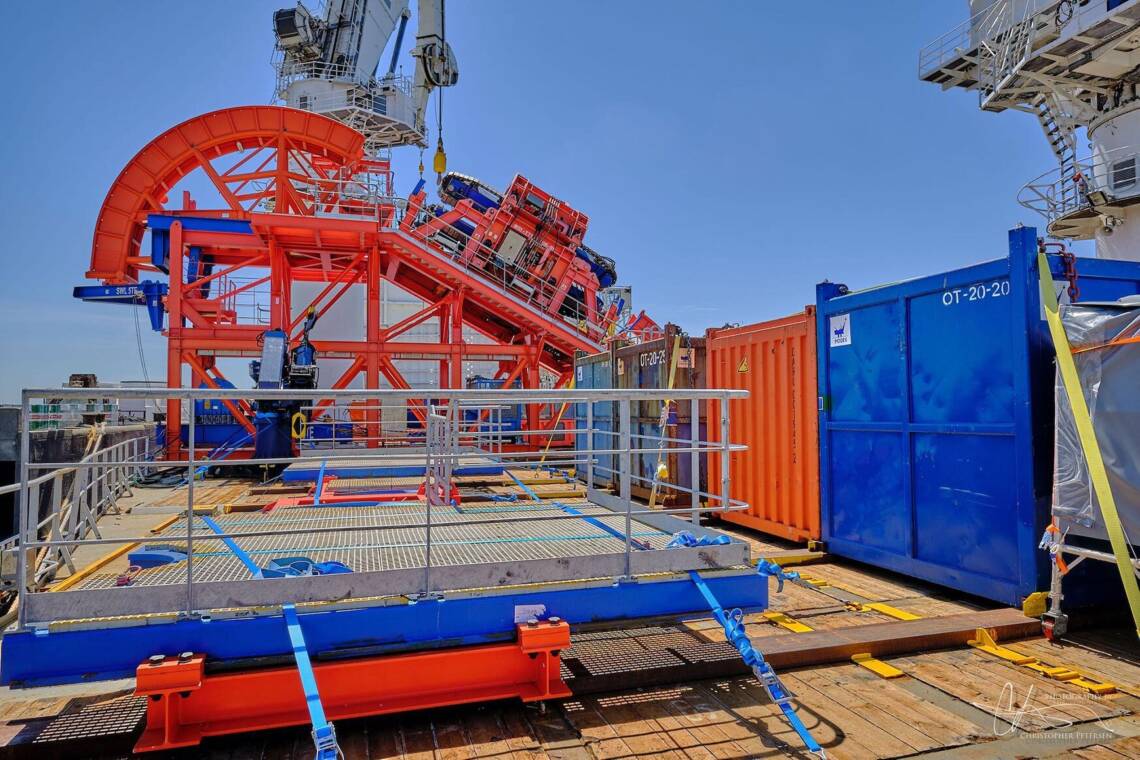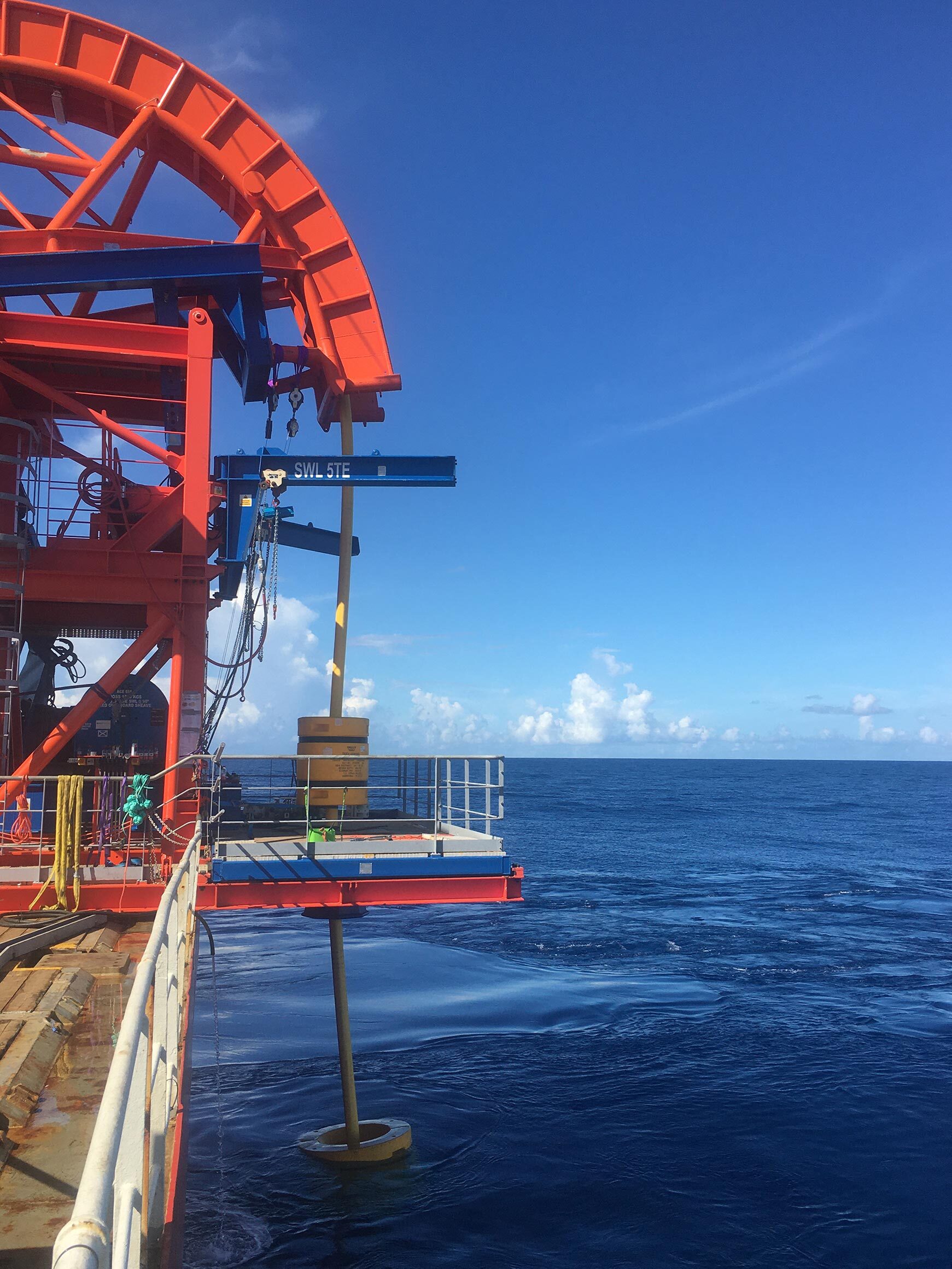Do you really need that vessel?

These are some of the most challenging times for everyone around the world, and in Oil & Gas in particular - and times like this call for dynamic, focused solutions that make a difference, ensuring projects continue to be commercially viable.
One such solution is an alternative method to the use of a Vertical Lay System (VLS) for the installation and recovery of flexibles and umbilicals.
VLSs typically form part of a permanent spread on Construction Support Vessels (CSV) (with the exception of some semi-portable VLSs). These systems are traditionally designed to install risers and dynamic umbilicals, taking advantage of the product being in the vertical orientation for attachment of the product jewellery, and for jumpers and umbilicals, where higher top tension capacity is required, allowing them to handle and deploy cross-sections in deep and ultra-deep waters.
However, for installations of top tensions of 100Te or less, or when lower product squeeze is required, such as when handling umbilicals, the VLS solution may be an unnecessarily expensive and compromised package, driving up the overall project execution cost and introducing technical risks.
An industry-proven alternative to the base case VLS approach is a modular spread of portable equipment that can be installed efficiently on a vessel of choice. The modular spread allows the product to be installed in a horizontal orientation by means of a tensioner, deck radius controller (where necessary) and an overboarding chute, direct from its on-board storage location (reel, carousel or turntable) along the deck and overboard.
The key benefit of the modular spread is the flexibility it offers to both Operators and Installation Contractors in terms of vessel selection for the execution of the work scope, reducing the ‘all-up’ day rate of an installation vessel. Selecting the correct modular spread for the project is primarily defined by the max top tension foreseen during installation or recovery and the properties of the flexible product.
Adopting a modular spread approach allows several back-deck layout configurations to be considered depending on the final specification of vessel selected i.e. moonpool deployment, over-side deployment or deployment over stern.
Offering a flexible back-deck solution allows smaller, more cost-effective vessels to be considered which may not have been deemed feasible previously. This may also include a vessel with other equipment on board that could perform other tasks whilst in-field, not just the installation – which carries a whole new host of time and cost benefits on a project.

MDL is a specialist in the delivery and operation of such modular spreads, which can also replicate the functionality of a VLS – in the form of an MDL Horizontal Lay System (HLS).
The MDL HLS integrates a pipelay tensioner and an overboarding chute, together with other project-specific equipment, into a single modular frame. This integrated system allows the product to be transferred from the horizontal to vertical orientation, facilitating the installation and recovery of risers, with the capability to install or remove the product jewellery such as buoyancy modules, tether clamps, bend stiffeners or restrictors etc. thanks to the retractable work platform.
The work platform – offering up to an unparalleled 4.5m height clearance - provides a safe working environment for personnel utilising the systems integrated within the HLS, such as davit arms and runway beams, to install or remove jewellery and perform other project-specific tasks, including removal of marine growth. For an example of such ops using the MDL HLS look up our recent project in Norway for Havfram (formerly Ocean Installer).
All of the features and benefits mentioned above are included in MDL’s Horizontal Lay Systems available for rent, complete with MDL’s wide range of 2 and 4-track tensioners and chutes from 2.6m - 5.2m MBR. With an optimised clearance between the chute and the hang-off, the HLS approach is extremely versatile for both installation and recovery operations, and is also fully road-transportable to the port of choice.
For complete peace of mind, the MDL HLS (like the rest of MDL fleet) is DNV-verified, ensuring that mission safety is prioritised in both design and operation.
Do you believe a HLS can make all the difference to your operations in this challenging market? We are keen to hear your feedback.
Alexander Wilson, Business Development Manager
- April 2024MDL supports Saipem on Greece INGS
- January 2024Preparation is key to a long life subsea
- January 2024Forward thinking with Holland
- January 2024Ensuring peak performance for FPSO and platform owners in 2024
- December 2023Reducing the risk of cable failures








